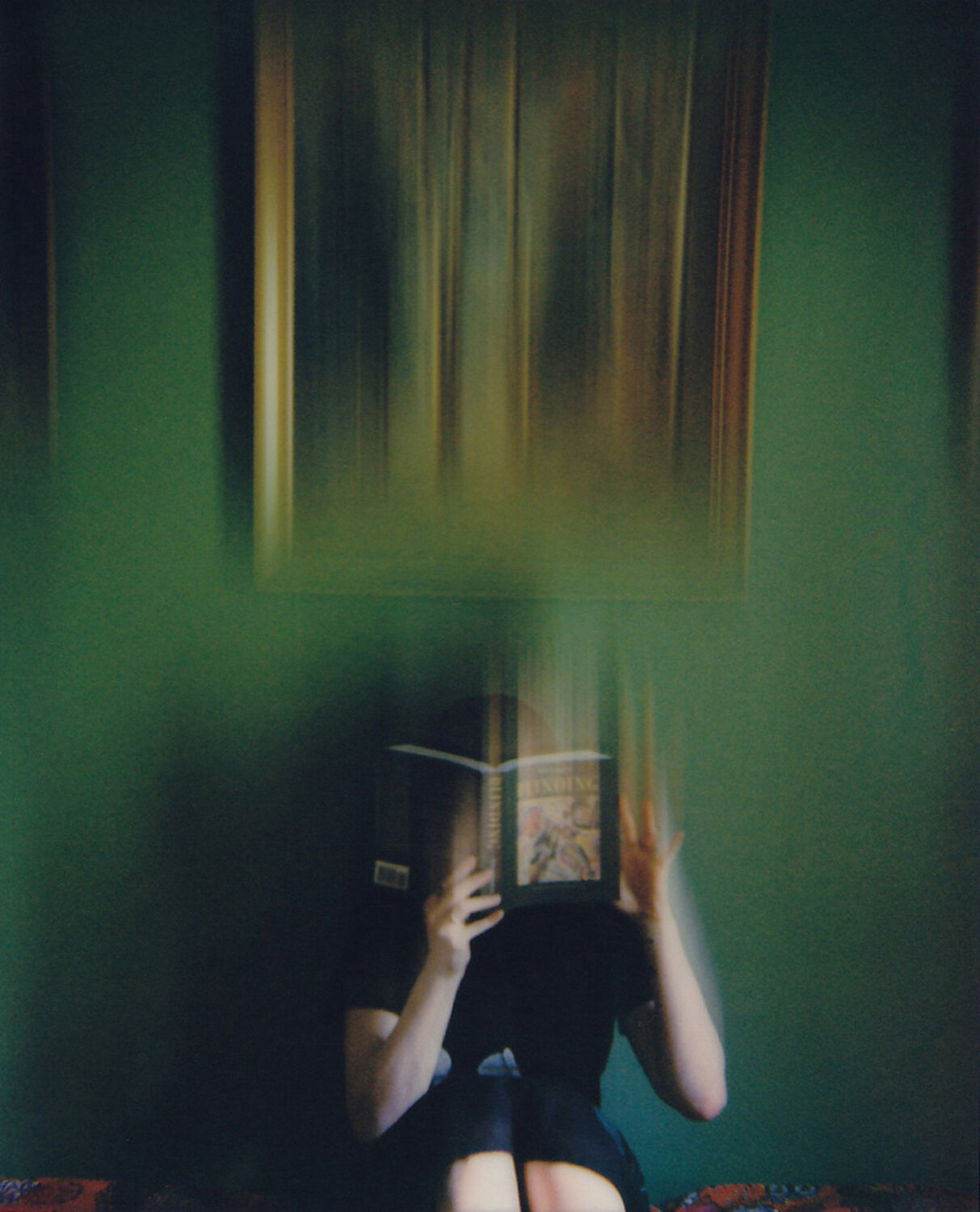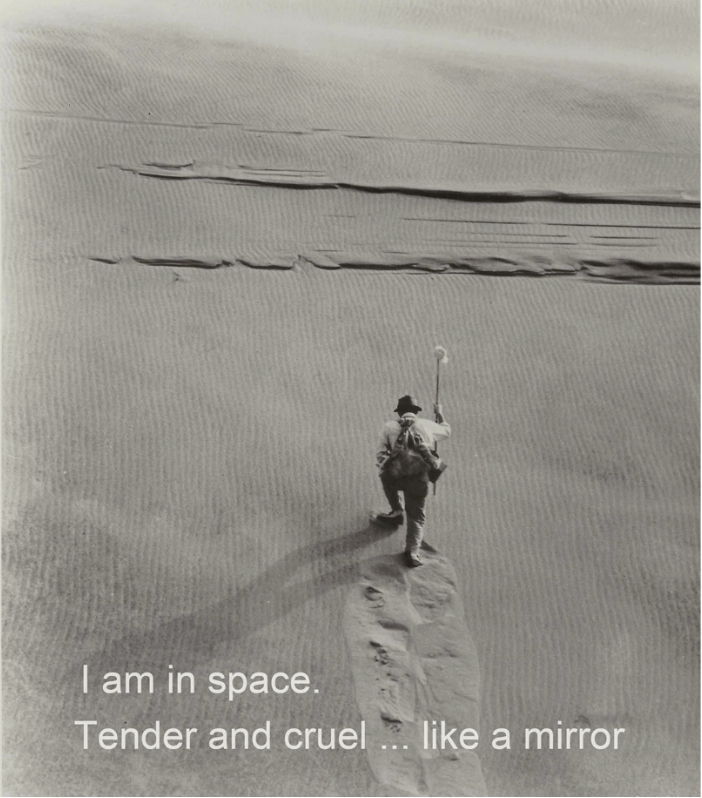Looking back on 2019, the editors at Don’t Take Pictures are honored to have worked with so many wonderful photographers. This year saw a shift toward thematic publications of our printed magazine with The Book Issue and The Museum Issue. Our online articles and columns continued to flourish and we published one new photographer every day on our homepage. Our editors have recapped the most popular articles from this past year, and we look forward to what the new decade has in store.
MOST POPULAR EXHIBITION: THE PHOTOGRAPHER IN THE FRAME
Untitled from the series Dwell, Lisa Toboz
Don’t Take Pictures publishes quarterly online exhibitions. The Photographer in the Frame was our most popular exhibition of 2019 and was published from February 20 to May 21.
“A photographer’s most reliable subject is his or her self. By turning the camera on oneself, the photographer is brought out from behind their lens, exploring or manipulating their identity. There is a performative aspect to self-portraiture. The photographer invites judgement and critique on not only their artistic message, but also their appearance and demeanor. For this online exhibition, Don’t Take Pictures presented self-portraits that provide insight into the “second self” that appears when artist becomes subject.” View the exhibition.
MOST POPULAR RULE BREAKER: LISSA RIVERA
In our monthly Rule Breakers column, industry veterans share their pet peeves on themes in contemporary photography. In this series they present their “rule” along with one photographer who breaks it, in an effort to show that great work is always the exception to the rule.
“I never want to see another staged picture of a nonconforming couple again. It isn’t that I don’t support non-binary persons or relationships, rather because I find most photographs commenting on this topic disingenuous. I receive a lot of work from artists who believe they’re pushing the envelope with sexuality and intimacy. All too often, the work is gratuitous and void of genuine content.
Enter the relationship between photographer Lissa Rivera and her “beautiful boy,” B.J. The images of her partner are undeniably beautiful; even the most conservative critic couldn’t deny their compositional beauty. There’s nothing shocking about the work—quite the opposite actually. The photographs are cinematic, classic, and calming. The work isn’t exaggerating a romance, rather documenting the increasing intimacy between them.” — Sherri Littlefield, photographer, Associate Director, Foley Gallery. Read the full article.
MOST POPULAR PHOTO OF THE DAY: KRYSIA LUKKASON
Night Trio by Krysia Lukkason was our most popular photo of the day in 2019. View the photo of the day archive.
MOST POPULAR SOME ASSEMBLY REQUIRED: MARTIN FITZPATRICK’S “ETCH-A-SNAP” ETCH-A-SKETCH CAMERA
Some Assembly Required is a monthly series that focuses on those who take the making of photographs a step or two further, creating their own photographic tools. 2010’s most popular article featured Martin Fitzpatrick’s camera made from an etch-a-sketch.
“Martin Fitzpatrick is a self-taught programmer and the author of Two Bit Arcade, a website for retro and lo-fi hacking. Fitzpatrick finds a creative outlet in programming, always wondering what he can make a device do. Inspired by the pictures rendered on the beloved childhood Etch A Sketch, he recently turned one into a digital camera.” Read the full article.
TOP 5 MOST POPULAR FEATURES
Victorian Women Photographers with Their Cameras
Kat Kiernan
Few women’s names are found among the list of photography’s early pioneers. Although they are largely absent from art history text books, a significant number of women photographers from the Victorian and Edwardian periods were acclaimed in their day.
Charlotte Doesn’t Work Here (And Other Changes in the NYC Art World)
Kat Kiernan
Charlotte York is a fictional character and yet her lifestyle and the job that funded it were thought by many to be representative of the average New York City gallery employee. My time there was not filled with champagne, luxury travel, and a salary that afforded me a Park Avenue apartment. I realized they were looking not for art, but for something that existed only in their televisions.
Uneasy Words While Waiting: An Interview With Robert Frank
Sean Kernan
"I don't really think very much about the pictures. Actually, I don't look at photography that much anymore. It looks back at me." — Robert Frank
Robert Frank passed away on September 9, 2019. In memory of him, we shared Sean Kernan’s 1972 interview with the great photographer.
Robin Cracknell’s Subtitle Poetry
Kat Kiernan
Robin Cracknell’s recent series, Subtitled, is a unique blend of text and imagery in which he produces enigmatic poetry from shuffled fragments of dialogue from foreign films. These poems are then printed over still images from different films. Using chance to determine how the dialogue is arranged, the film’s original context is transformed into one entirely different.
Anne Brigman’s Early 1900s Nude Self-portraits
Anne Brigman
The day I went into Desolation Valley—this primitive knowledge was a guardian angel. The tripod acted like a contortionist, all swivel joints and unlooked rust, but I put it doggedly back into the knapsack for the rest of the wonderful time.
MOST POPULAR IN MOTION: ALFRED STIEGLITZ: THE ELOQUENT EYE
Alfred Stieglitz: The Eloquent Eye is an excellent documentary directed by Perry Miller for the PBS American Masters series. Produced in 1999, the hour-and-a-half film is now available on Vimeo. The film follows the director’s earlier documentary on Georgia O’Keefe. Previously shot footage of O’Keefe discussing Stieglitz and their marriage inspired this documentary which also includes interviews with Stieglitz scholars and museum curators. Watch the film.
MOST POPULAR BOOKMARKS INTERVIEW: KRIS GRAVES PROJECTS
Bookmarks is a monthly series of interviews with independent photobook publishers. 2019’s most popular interview is with Kris Graves Projects.
“I ran a gallery for three years and realized that I wanted art to be accessible. I'd rather sell 250x $25 books than one large artwork. I focus on producing projects that would normally not be chosen by the big publishing houses. I don't have a ton of staff to pay and I can do most of the work from home. 1. Almost nobody can afford artwork these days, all prices are inflated. Even my own artwork prices are too high. 2. Books are fun and easy—less stressful. I don't have to pay for space and my debt isn't in the tens of thousands monthly.” — Kris Graves Read the full interview.
We enjoy bringing amazing photography and thoughtful writing right to your door, and hope that you will consider starting the New Year off right by subscribing to Don't Take Pictures and save 16% off newsstand prices.













